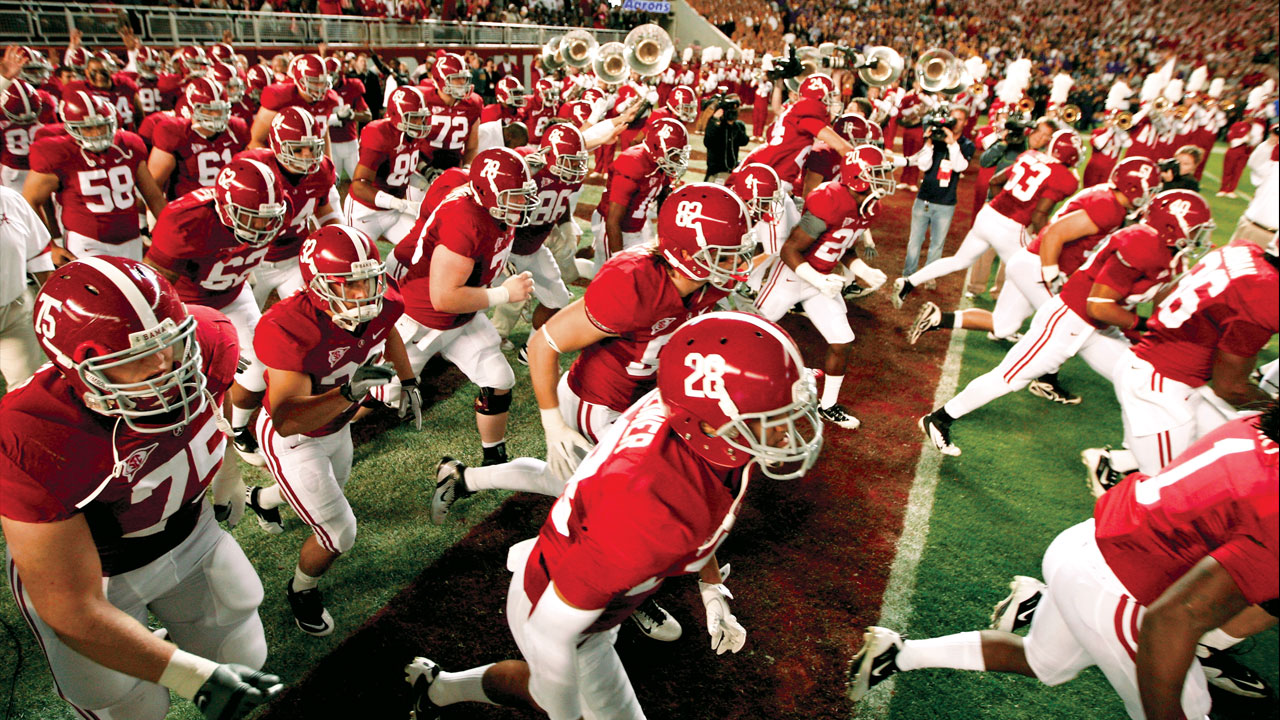Before he became Broadway Joe, a New York Jets icon and a Hall of Famer, Joe Namath was a kid from Beaver Falls, Pa., who turned down offers from Major League Baseball teams out of high school because his mom wanted him to go to college. He liked football better, anyway. But the phenom with the golden arm knew next to nothing about the University of Alabama’s storied program when he was recruited to the Crimson Tide in 1961. “Only thing I knew about Alabama was that I liked their uniforms,” Namath said later. It goes to show that a sharp uniform can go a long way. It can even help hook an all-timer at quarterback.
Alabama’s historic crimson-and-white jerseys—again thrust in the spotlight this year after the team romped to its 15th national title and further cemented the program as one of the NCAA’s best ever—have barely changed since Namath’s day (material excluded, of course, since Dri-FIT wasn’t around in the ’60s). It’s the simplicity of the design and the many legends who’ve donned ’Bama’s threads—Hall of Famers Don Hutson, John Hannah and Derrick Thomas, and more recently Heisman Trophy–winner Mark Ingram, to name a few—that make it one of sport’s best.
The uniform has evolved since Alabama’s inaugural season in 1892, when players went helmetless and wore weird-looking beige vests overtop long-sleeved crimson shirts. But it didn’t take long to find a version of the uniform we know and love today. By the 1940s, the Crimson Tide—so named by a sports writer in 1906 after the team held on for a tie in a muddy game against heavily favoured Auburn—sported crimson jerseys with a white number on the front. In the ’50s, the number was added to the back. Sleeves got shorter, beige pants saw bands of colour added and removed, and crimson helmets got stripes and numbers, though never a logo. From there, the jersey’s sleek design remained unchanged, save for the addition of names on the back in 1981.
It would have been easy to tinker with these threads. The team’s been known as the Red Elephants since 1930, thanks to that year’s massive squad, and there had to be some temptation along the way to smack an elephant on the front of the jersey and lose the simple numbers. But sometimes simple is best. And why change what caught the eye of Broadway Joe? Even through those dark sunglasses, Namath knew a winner when he saw one.


